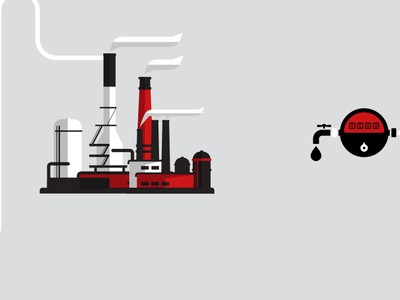With over 60% of its revenues derived from the US, Hunting has significant operating leverage to any recovery in either shale or conventional oil and gas activity. The Group has relatively high fixed costs, operating as it does off 43 manufacturing facilities globally with a workforce of circa 4,000 employees. It has a high exposure to the US onshore market, deriving 40% of its revenues from this segment. Despite the sharp downturn in the onshore arena, this exposure should recover swiftly as the oil price starts to recover.
Hunting makes specialised components used in well construction. The key products include high-quality tubing and connections, which Hunting source from steel mills across the world. Hunting also manufactures perforating guns alongside other drilling and measuring tools. The perforating guns deliver controlled explosive charges that pierce the well casing to open up a connection to the reservoir. These are only used once and cost around $2,000 each. Hunting is in the process of internationalising the product and expanding its already significant 35% market share. The majority of Hunting’s products are hard to source, limiting margin pressure and implying quicker recovery patterns once demand resumes.
The business faces a sharp cut in the extent of capital expenditure by independent exploration and production (E&P) companies of around one third or more out into 2016. Nevertheless, ongoing investment will be required to counter the natural declines in oil production and to sustain growing global supply. Hunting’s share price has traditionally correlated closely with ebbs and flows in the price of Brent crude. Whilst pricing and demand pressures may continue in the short to medium term, I favour Hunting’s valuable technological position and its strategic poise within the sector.
Unless OPEC actively intervenes to curtail supply and demand imbalances within the global oil market, it is expected that it will take one to two years for the market to re-balance.
Hunting’s naturally conservative management have kept the Group in an enviable position. 2015’s half-year indebtedness was only 12% of assets and is expected to continue to remain low. Hunting is strongly cash generative, delivering free cash flow of US$139m in 2014, after spending some US$95m on its global facilities. Free cash flow will undoubtedly fall this year due to lower net income, however management remain committed to investing in new facilities and ongoing product development. This is clear in that Hunting chose to reduce their dividend payout recently rather than take the alternate options of compromising on investment in future capacity and/or raising debt levels. It is clearly a shame that the dividend had to come down, but I view the option of maintaining investment as the best long term option for creating shareholder value.
Hunting’s strong position may well allow it to acquire distressed assets of high quality as cyclical pressures are brought to bear on the sector. The experience of the management team and their ability to take on debt leaves Hunting well placed at this juncture. In addition, despite its high quality assets and global footprint, Hunting remains a relatively small well equipment player in the scheme of things. It could easily prove vulnerable as a target for backward integration by one of its own oil field services clients or indeed any operator eager to enter this space. Unless OPEC actively intervenes to curtail supply and demand imbalances within the global oil market, it is expected that it will take one to two years for the market to re-balance. Assuming that OPEC does not act effectively, the market must therefore restore its own balance. We see already that lower prices are curbing investment and production growth from US shale markets. Hunting is also adeptly diversified into emerging unconventional markets like the Middle East and China. Margin pressure will be limited by its expanding portfolio of intellectual property and cutting edge products, whereby it is capturing a dominant global market share in perforating equipment. Hunting’s earnings visibility should also rise as it increases sales from backlog businesses. In addition, Hunting may exit from lower margin and more commoditised businesses such as drilling tools, allowing it to capture a larger market share of future well equipment spending. Increasing automation in Hunting’s manufacturing facilities should drive efficiencies. Hunting also has a non-core and small E&P business that could be disposed of.
The management has been proven over several cycles and they regularly visit our offices to update us on current trading. Hunting is highly operationally leveraged in several key areas of a depressed and cyclical capital expenditure field. It has a proven ability to acquire accretively and is ideally placed to do so. In addition, despite or because of its exemplary technological and trading record, Hunting could easily be acquired as the oil and gas sector consolidates and reorganises.



